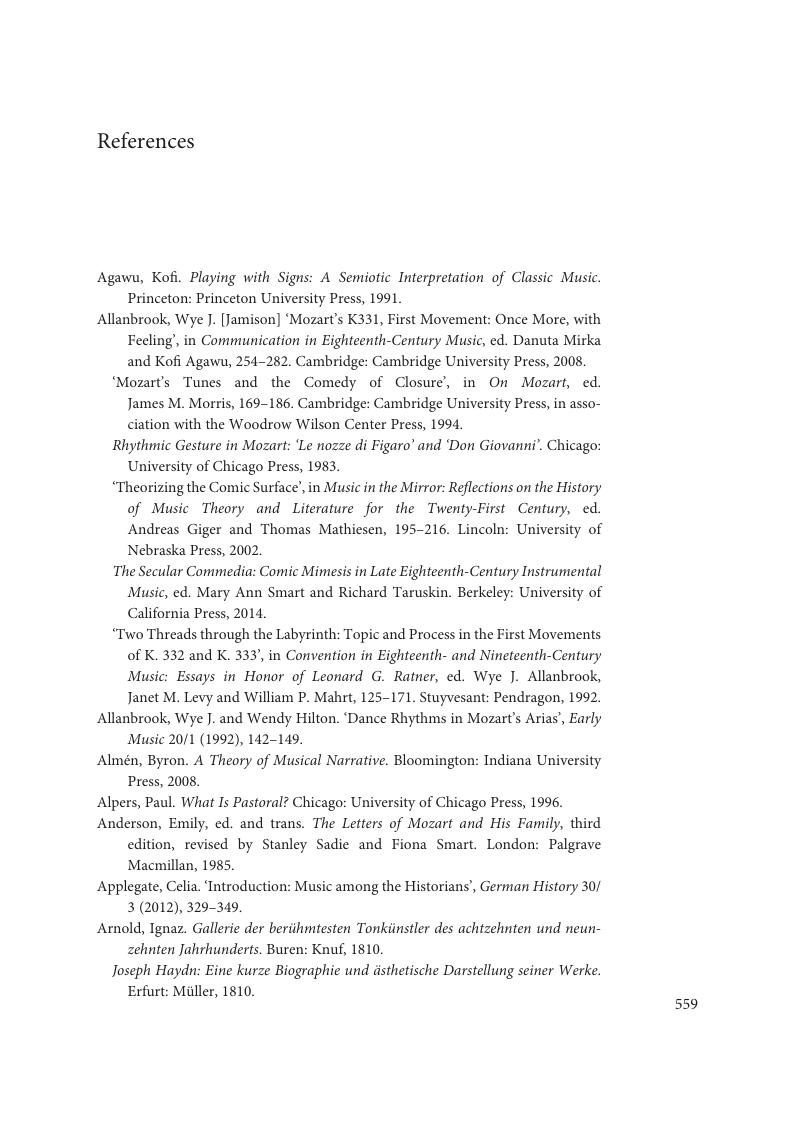References
Published online by Cambridge University Press: 19 September 2019
Summary

- Type
- Chapter
- Information
- Instrumental Music in an Age of SociabilityHaydn, Mozart and Friends, pp. 559 - 585Publisher: Cambridge University PressPrint publication year: 2019



